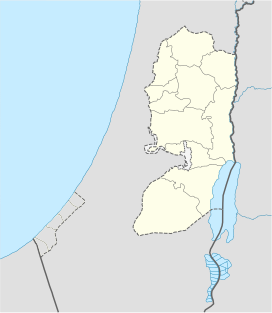|
Tall Asur
Tall Asur (Arabic: تل العاصور), (Hebrew: Ba'al-hazor (Hebrew: בַּעַל חָצוֹר; also Hebrew: רמת חָצוֹר, romanized: Ramat Hazor Mount Hazor), is an irregularly shaped plateau, marking the geographical boundary between Samaria to its north and Judea to its south. It is one of the highest points in the West Bank; with an altitude of approximately 1,020 metres (3,350 ft) above sea level. It is surrounded by the villages of Silwad, Taybeh, Kafr Malik and Al-Mazra'a ash-Sharqiya and the Israeli settlement of Ofra. It is identified with the biblical site of Ba'al-hazor, a place in Samaria on the border of Ephraim and Benjamin where Absalom held the feast of sheep-shearing when Amnon was assassinated.[a] If that is correct, the modern Arabic place name preserves the original Biblical name.[1] EtymologyIts name is derived from the word for "courtyard", referring to the walled enclosures that this large land mass enabled ancients to construct. These enclosures served as seasonal pens for sheep that were brought there for shearing, which was accompanied by a festive gathering. The peak housed a pagan shrine for worship of a Baal (deity) who was considered "lord of the mountain", hence its name: "Baal-hazor". The Genesis Apocryphon of the Dead Sea scrolls identifies Ramat Hazor as the site between Bethel and Ai where Abraham built an altar and invoked the name of God (Gen. 12:1–9). At this site the accounts of Genesis 13:14–17 took place.[b] Modern useThe mountain has two peaks, one of which is an IAF base.[2] Notes
See also
References
SourcesWikimedia Commons has media related to Baal-Hazor.
|
||||||||||||||||||||

